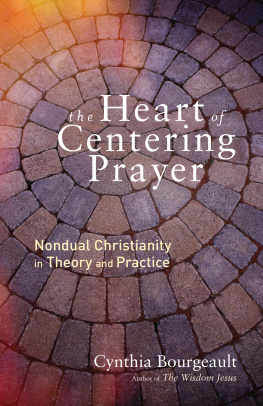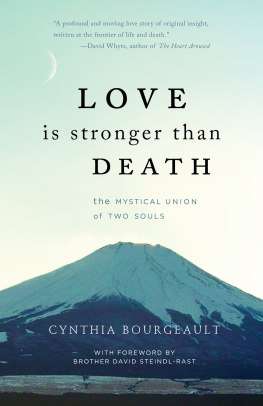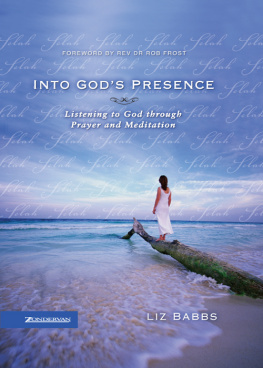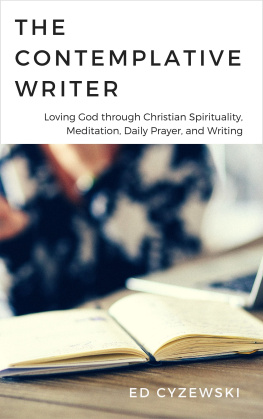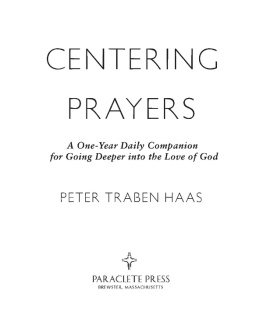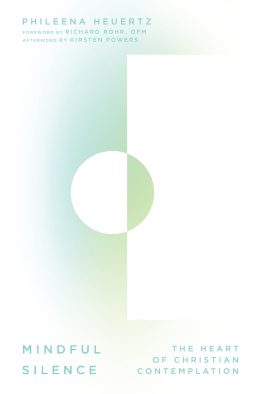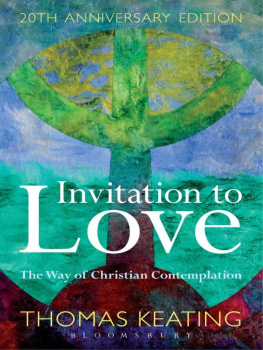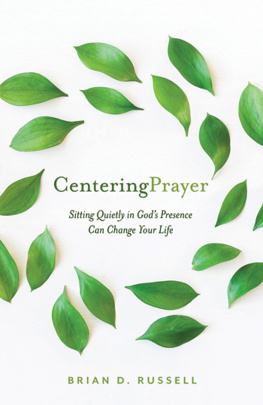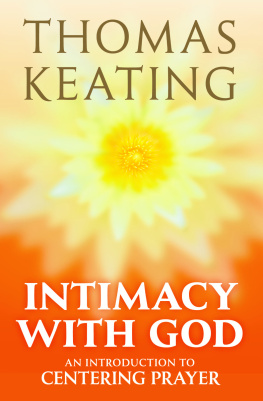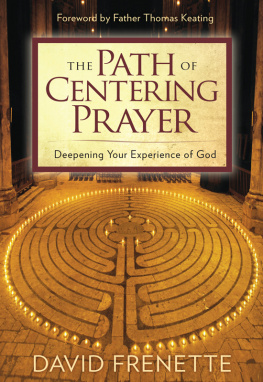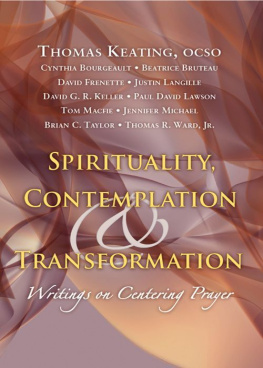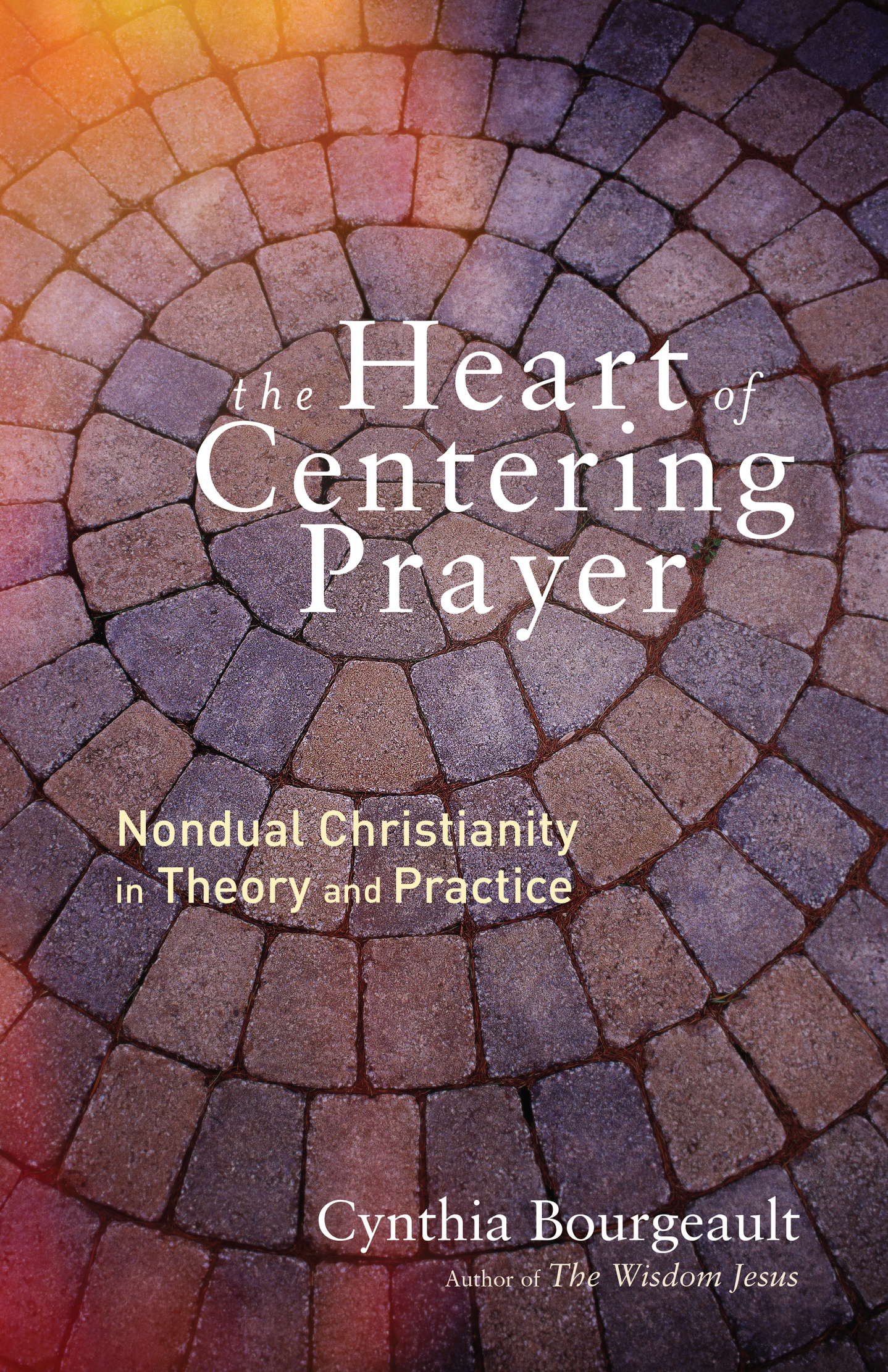Contents
Landmarks
Print Page List
ALSO BY CYNTHIA BOURGEAULT
Centering Prayer and Inner Awakening
Chanting the Psalms
The Holy Trinity and the Law of Three:
Discovering the Radical Truth at the Heart of Christianity
Love Is Stronger Than Death:
The Mystical Union of Two Souls
The Meaning of Mary Magdalene:
Discovering the Woman at the Heart of Christianity
Mystical Hope: Trusting in the Mercy of God
The Wisdom Jesus:
Transforming Heart and Mind
A New Perspective on Christ and His Message
The Wisdom Way of Knowing:
Reclaiming an Ancient Tradition to Awaken the Heart
Shambhala Publications, Inc.
4720 Walnut Street
Boulder, Colorado 80301
www.shambhala.com
2016 by Cynthia Bourgeault
Cover design by Jim Zaccaria
All rights reserved. No part of this book may be reproduced in any form or by any means, electronic or mechanical, including photocopying, recording, or by any information storage and retrieval system, without permission in writing from the publisher.
Unless otherwise noted, all scriptural quotations are taken from the Holy Bible: New Revised Standard Version (Catholic Edition, Anglicized text.) 1999 by Harper Catholic Bibles, a division of HarperCollins, publishers.
Library of Congress Cataloging-in-Publication Data
Names: Bourgeault, Cynthia, author.
Title: The heart of centering prayer: nondual Christianity in theory and practice / Cynthia Bourgeault.
Description: First Edition. | Boulder: Shambhala, 2016. | Includes bibliographical references and index.
Identifiers: LCCN 2016013201 | e ISBN 9780834840492 | ISBN 9781611803143 (pbk.: alk. paper)
Subjects: LCSH: Contemplation. | Spiritual lifeChristianity.
Classification: LCC BV5091.C7 B685 2016 | DDC 248.3dc23
LC record available at https://lccn.loc.gov/2016013201
v4.1_r2
to Thomas Keating
Beloved teacher,
spiritual father,
and friend
CONTENTS
PART ONE
A Short Course on Centering Prayer
PART TWO
The Way of the Heart
PART THREE
The Cloud of Unknowing Revisited
I am deeply grateful to the Narthex Foundation for the financial support that allowed me to carve time out of my teaching schedule to bring this book together.
Some of the material here has been previously published or offered in other teaching formats. While it has all been reworked extensively to fit its new habitat, I acknowledge herewith, with gratitude, my original publishing partners. What is now part one, A Short Course on Centering Prayer, originated as a twelve-week e-course offered by Spirituality and Practice in the fall of 2011. My continuing thanks to Fred and Mary Ann Brussat for their imaginative programming and brilliant website: you guys are truly pioneers! My present , Centering Prayer as Witnessing Practice, was originally published (again by the same title) in the Sewanee Theological Review, vol. 53, no. 3 (Pentecost 2010). My extensive exploration of The Cloud of Unknowing, which comprises part three of this present book, began as a keynote address to Contemplative Outreach of Colorado in March 2013; it was further developed as part of a teaching unit for The Living School for Action and Contemplation, where I have the honor of serving as one of the core faculty. To my colleagues Richard Rohr and Jim Finley, to the curriculum director Paul Swanson, and to all those pilot Living School students who first worked their way through this material, thank you for your adventurous spirits and helpful feedback.
I am particularly grateful to Michael Spezio and Brent Field, who took the time to walk me through their groundbreaking neuroscience research on Centering Prayer and to review my for accuracy.
To Dave ONeal, my veteran editorial partner at Shambhala (I think this makes book number five, yes?), for your inimitable way of holding my feet to the fire while still drawing out, with such respect and finesse, so much more than I knew was in me.
And to Thomas Keating, teacher, friend, guide, angel-to-my-Jacob, and nest for my soul for thirty-five years, there are no words that can even begin to express what you have meant in my life. Just know that the simple thank you conveyed in this dedication reverberates with a love that is bigger than both of us and will continue to hold us together. Of this I am sure.
Its been more than a decade now since I wrote Centering Prayer and Inner Awakening.Christian contemplative tradition in which it is ensconced. Some of you may have encountered portions of this material before; I doubt that any of you have encountered all of it or put the pieces together in the way that I am about to do here.
While these talks and essays were originally developed in a variety of formats and presentational styles, they all step off from the common underlying assumption that Centering Prayer is a distinctive method of meditation with its own way of getting there. While this assertion may seem obvious to those of you actually practicing the prayer, I find that it continues to be significantly underappreciated by those merely commenting on it, whether from a scientific, theological, or interspiritual perspective. Again and again, in the spate of new materials emerging from all these quarters, I encounter the assumption that there is what you might call a standard model of meditation, and that Centering Prayer simply happens to be the Christian packaging of it. The radical import of Thomas Keatings oft quoted dictum that Centering Prayer is done not with attention but with intention generally fails to register.
So my first task in this book will be to bring some consideration to the method of Centering Prayernot so much from the why of the method as from the how of it, or what actually happens when youre doing the practice. And here, in contrast to what most people assume to be the standard model of meditation, Centering Prayer does indeed seem to be playing by a whole different set of rules. Rather than engaging the powers of focused attention (on the breath, a mantra), it seems to be more interested in cultivating two qualities that essentially involve the release of attention (or perhaps, more accurately, its reconfiguration). The first of these qualities has been extensively described in the Orthodox branch of Christianity under the name of attention of the heart (although of course without any awareness of its relevance for Centering Prayer). The second, to the best of my knowledge, has never been specifically identified in the Christian tradition at all, although it has been accurately and even comprehensively described, as we will see in part three of this book. A Tibetan Buddhist would have no difficulty spotting it as objectless awareness.
Both of these capacities are well known within any comprehensive taxonomy of meditation. But in the Eastern traditions, they are generally assumed to be advanced capacities, accessed only after a conscious voluntary attention has been well established. What makes Centering Prayer so charmingly disconcerting is that it leads off with these capacities, essentially turning traditional meditation pedagogy on its head. This was largely the innovation of Father Thomas Keating, principal architect of Centering Prayer and my own mentor in the practice for more than thirty years now. Whether his intuition on this point proves in the long run to be a stroke of genius or an ill-advised shortcut is for me one of the more interesting questions still out there to be addressed. As my presentation unfolds, I think you will come to see how I feel about this and why.

